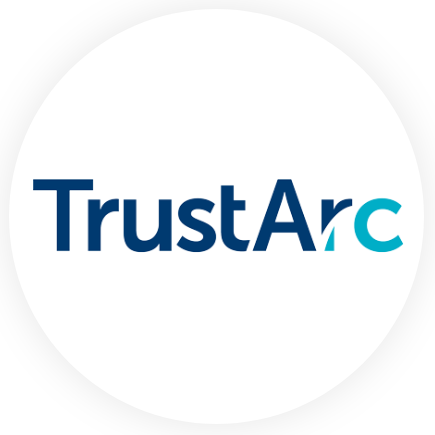Cyberattacks, data breaches and system failures can strike businesses of any size, often with devastating consequences. But with the right disaster planning, your small business can withstand the worst and rebound quickly. Before disaster strikes, ask yourself: is your business prepared for the worst?
Imagine a Disaster Recovery Plan (DRP) as the blueprint for rebuilding your business after any unplanned disruption, from a cyberattack to a natural disaster like a tornado. You wouldn't want to be left to rebuild your home with just the rubble; you’d want coverage to ensure you had a place to immediately transition while repairs were made. A disaster plan is the blueprint and assurance your business needs to have in place in advance.
Should the unthinkable happen, you can swiftly redeploy your data and activate your plan—because you've already confirmed its integrity through rigorous testing. More importantly, some insurance companies may mandate a disaster plan, or a business continuity plan, for coverage purposes. It serves as proof that you're taking proactive steps to mitigate risks, which can be just as important for your financial security as it is for operational readiness.
On the other hand, data recovery is the failback, not the core of your plan. It's the last-ditch effort when all else fails, just like sifting through broken bricks in hopes of piecing together a shelter after a tornado strikes. Data recovery is more time-consuming and more expensive. The reality is that without a solid disaster plan, a high percentage of businesses fail after a ransomware attack or a natural disaster. They simply can't bounce back.
Understanding the Risks
Before you can defend against IT disasters, you need to understand the risks. Cyberthreats like ransomware, phishing and malware are increasingly sophisticated and can cripple your operations. Natural disasters, power outages and hardware failures can also disrupt your IT systems. The cost of downtime, data loss and reputational damage can be astronomical for a small business.
Assessing Your Vulnerabilities
The first step in disaster planning is to conduct a thorough risk assessment. Identify which assets are critical to your business operations, such as customer data, financial records and intellectual property. Determine the potential threats to these assets and evaluate your current security measures. Are your systems patched and up-to-date? Do you have strong firewalls and antivirus software in place? Are your employees trained to recognize phishing attempts?
Creating a Disaster Recovery Plan
A comprehensive disaster recovery plan is your roadmap to business continuity in the face of IT disruptions. This plan should include:
- Data Backup Strategies: Regularly back up your data to multiple locations, including cloud-based services and offsite storage. Ensure that backups are encrypted and tested frequently for integrity.
- Response Procedures: Outline clear procedures for responding to different types of IT disasters. Assign roles and responsibilities to your team members so everyone knows what to do in an emergency.
- Communication Plans: Develop a communication strategy to keep employees, customers, and stakeholders informed during and after an IT disaster. This helps maintain trust and can reduce the impact on your business reputation.
- Recovery Objectives: Establish recovery time objectives (RTOs) and recovery point objectives (RPOs) to set clear goals for restoring operations and data after a disaster.
Investing in Security
Investing in robust cybersecurity measures is crucial. Consider employing firewalls, encryption, multi-factor authentication and intrusion detection systems. Regular security audits and penetration testing can help identify weaknesses before attackers do.
Training Your Team
Human error is often the weakest link in cybersecurity. Regular training sessions can help your employees recognize and avoid potential threats. Teach them best practices for password management, email security and safe internet browsing.
Testing and Updating Your Plan
An untested plan is as good as no plan at all. Conduct regular drills to simulate disaster scenarios and test your recovery procedures. After each test, review and update your plan to address any shortcomings.
Partnering with Experts
Small businesses may not have the in-house expertise to manage complex IT disaster planning, but partnering with a trusted Managed Service Provider (MSP) like NerdsToGo can give you access to the skills and knowledge needed to protect your business.
Remember, investing in a disaster recovery plan is investing in your business's ability to weather the storm and emerge unscathed. As your locally outsourced IT team, NerdsToGo can enhance your preparedness by developing a disaster plan that maintains your IT infrastructure. With service plans like NerdAssure, we ensure the ongoing integrity of your IT infrastructure, allowing you to focus on your business, confident that there’s a plan—and a team—ready to assist if disaster strikes.

Disaster Recovery Plan: A disaster plan, also known as a disaster recovery plan (DRP), in the context of information technology (IT), is a documented, structured approach with instructions for responding to unplanned incidents. This plan is an essential part of the larger business continuity plan and focuses on maintaining and quickly restoring IT systems and operations in the event of a disaster.
Recovery Plan: A recovery plan for IT and small business is a subset of the disaster plan that specifically addresses the steps to be taken after a disaster has occurred to restore normal business operations. While the disaster plan includes preventative measures and immediate response actions, the recovery plan focuses on the longer-term process of recovery.




.jpg)